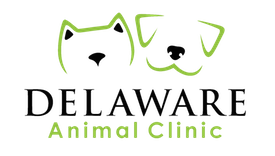
My cat Gus is normally very friendly and loves attention. Sometimes when I pet him, though, he turns around and bites me. Any advice? -Annie, Beaumont
Gus is exhibiting behavior known as petting-induced aggression. The signals your cat gives can be quite confusing. One minute Gus may be rubbing against your leg, jumping on your lap or even head butting your hand in what seems like a plea for affection. Then the next minute he is biting you and running away.
Some cats want to be in your company but do not want to be petted. Just because a cat sits in your lap or on the sofa next to you does not mean he wants your affection. This situation represents a failure in communication between the cat and owner. So the first thing to ask yourself is if Gus really wants to be petted at all.
If Gus truly seems to enjoy getting petted, but these sessions occasionally end in biting, then Gus is trying to tell you he no longer wants to be stroked. Every cat has a different threshold of tolerance for human petting and physical affection. Initially the interaction is pleasing to Gus, but there reaches a point where the sensations are no longer enjoyable.
There may be an underlying medication condition that is triggering Gus’ behavior. Possible causes may include pain due to arthritis or discomfort from skin diseases. In feline hyperesthesia syndrome, cats are overly sensitive to all touch which may result in episodes of skin rolling or twitching. Any condition that increases irritability can also increase aggression, such as dental disease, anxiety or metabolic diseases. A visit to your veterinarian to assess for such problems may be in order, especially if Gus’ biting behavior is new.
Your response to your cat’s aggression can exacerbate the problem. When Gus bites you and you stop petting him, he learns that his aggressive behavior allows him to get what he wants. This “reward” can result in more frequent or intense episodes. So you need to take steps to handle this situation before it progresses further.
Cats usually signal when they are reaching the end of their petting tolerance, but these signs may be subtle and easily missed. Postural changes for which to monitor include fidgeting, tail twitching, body tensing, dilated pupils or leaning away. Your cat may also flatten his ears, pull his lips back, or possibly hiss or growl. It is very important to pay attention to your cat’s cues that indicate his petting threshold is being reached.
Identify a special treat or favorite toy to use as a reward for your cat. Only attempt retraining sessions when Gus is truly in the mood for affection. Pet him for a short period of time. Stop well before he shows any indication of nervousness or aggression. Offer Gus his special reward for tolerating the petting session. With each success, you can gradually increase the duration of the petting prior to giving the anticipated reward.
If your cat shows any beginning signs of agitation or aggression (tail twitch, ears back, etc.), immediately stop all interaction. Leave the area and do not give any reward. You may need to stand up slowly and allow your cat to jump off your lap on his own. At your next session, decrease to a lower amount of stroking.
When cats groom each other, they typically focus on the other cat’s head and neck regions, not down the back. So you can take cues from our feline friends and try light scratching around the neck and chin instead of full body petting.
Cat bites can be dangerous and lead to serious infections. Don’t risk your safety trying to “retrain” Gus if he is not a willing participant. In some circumstances it is best to accept and enjoy your cat’s company next to you or even on your lap, but with no other physical contact. The key to a peaceful relationship is being aware of what Gus is trying to communicate to you.
